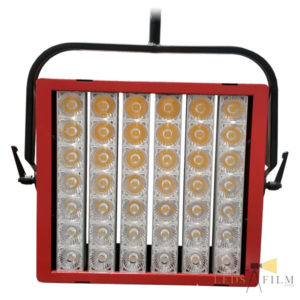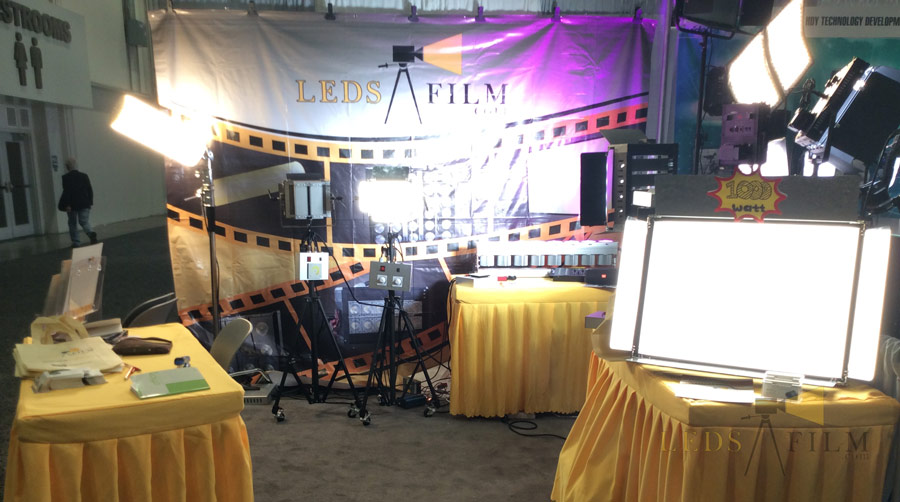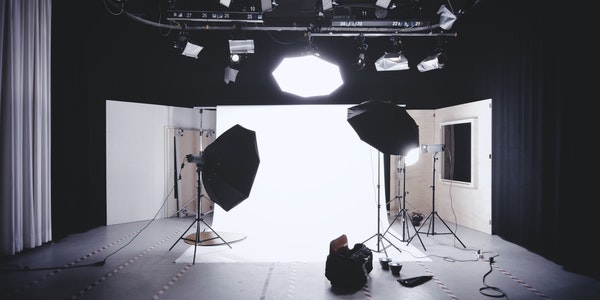Table of Contents
Key Points of TV Lighting Design
Unfortunately, when the camera’s range exceeds the line of sight of the edge of the auditorium, the black side screen will be shot in. Sometimes, seats are placed on the stage where they don’t need to be illuminated, such as those above the stage. The close-up lens requires the fineness of the light and provides opportunities. Many small details can be clearly seen from a short distance, but not from a long distance. Many problems need to be solved by the lighting engineer.
The reason why the bridge of nose is too bright, the side light is too harsh and the shadow is too solid is that the luminous area of the light source commonly used in the theater is too small, which is different from the large area soft light source with reflective characteristics used in making movies. In addition, we have to pay attention to the design of the actor’s eye light. When shooting “the story of winter” by Brana company, Neil Austin’s writer and famous photographer Brett Brett were employed.
Ember used a symmetrical two-sided light about one person tall. This allows the actor to stand out from the environment. But when shooting close-up shots, the actor will appear flat and have strange shadows under his nose. Sometimes, just fine tune to reduce the uniformity of illumination on both sides and add a little front light to get the normal picture. At the same time, Brett noticed that because the camera can only work in 2D mode, it is necessary to design a suitable backlight for the actors to make the picture more hierarchical, but the backlight can not shine on the nose, and the generated shadow can not enter the lens, so as to ensure that it is not too dark.
This kind of days of repeatedly adjusting lights can sometimes make people feel boring. Theater staff adapt to the fast pace of work in the theater. The repeated work of dimming, checking the camera, dimming, mobilizing the actors, dimming, recording the camera parameters, and mobilizing the actors is boring. However, this kind of work also has an attractive side, it can let the lighting engineer to watch these familiar performances from a new perspective, to design a lot of lighting scenes, to do a lot of stage settings, will feel that time is always not enough. Therefore, we must do it step by step according to our own design scheme, so as not to make mistakes and affect the recording.
Recording and adjustment of lighting
According to the requirements of live television, the second day after the light was readjusted, the spare tape of the program was recorded. The actors and live audience of the first performance took the lead in appreciating the light after the rearrangement. From then on, it is necessary to record the camera parameters during the full seat rehearsal. The director, director assistant, cameraman, director, stage mechanic, etc. will walk the stage before the live broadcast. Recording in advance is to prevent satellite from stopping connection during live broadcasting caused by connection failure or some other technical failure.
After recording, the video is usually replayed in the cinema, which enables the lighting engineer to watch the whole play at a time instead of watching it scene by scene. Of course, in general, there is also a relationship between the two. Watching the video helps to solve some of the lighting problems that have been found on the day of the live broadcast. Usually, it also makes the process of feeling messy clearer. Theater lighting usually has a certain rhythm and regularity, and it also needs to guide the audience’s line of sight, which may not be the same as the effect on the camera.
The program of running lights with precise timing may not appear in the close-up lens, but occasionally a part of the camera will be captured when the camera is moving, and the same effect may be obtained when the lens is switched. The fade in and fade out time of light should be adjusted accurately to facilitate the camera to perceive the change of light, and the light in point also needs to be fine tuned. The dark ups and downs at the beginning and end of the performance are also a challenge, because many directors are afraid to make the audience stare at a dark screen for too long.
The common solution is to use special lights to illuminate the audience at the beginning of the performance, and quickly increase the brightness of these lights at the end, but the recording of TV programs will be different.
When the world tour starts, the same show will still have a large audience. After the broadcast of the publicity video, the performance started immediately. The lighting engineer is in the lighting control room of the theater, with two earphones, which are used to listen to the instructions of the guidance control room and control the lighting changes of real-time performance. A monitor and a switch are used to switch the camera of each stand. There is usually a lighting performance list, which is marked with lens number, exposure value and some important moments to remind engineers to keep focused.
For example, remind them to be ready to adjust the camera exposure value, in this process or rely on their expertise professional skills. A good lighting programmer can still contribute to the scene. When the actor has some unexpected situations or captures some bad scenes, and some clothes are not suitable, he can quickly make slight adjustments, but he must ensure that the previous scene is recorded normally, which requires a transition scene. Like any night’s physical performance, this is a live broadcast, which can’t be stopped after it starts, and it’s impossible to record it again.
Adapting the camera to the light
For the live broadcast, the end of the live broadcast is equal to the completion of the performance, because all subsequent broadcasts will use this video as the broadcast material. The TV station will take it directly and completely: the lighting production team of the theater has to ensure that the previous performance is restored (although the user has made a separate video play list in the main video file, he may still want to get a different performance file, so that the two versions can be compared; and there may be no need to modify those positions and color elements
The change of clothing was adjusted again. For a movie, just in case you need to save the performance video file, you need to record the work content. Bruno Pat, the lighting designer of the film Miss Saigon, points out that there is a lack of continuity between the scenes of the continuous performance and the cut scenes in the film. Performance brochures with long performance cycles often change, especially when new actors join or tour, they need to be re recorded. “What you see through the camera is never the same as what you see with the human eye.”. Bernie Davis concluded, “but generally both can be accepted through constant adjustment, so we can watch the picture on the monitor with new ideas. There are many reasons for us to change the camera parameters. We just need to make a discussion about whether to keep these changes on the stage in the future. Don’t simply think that the process of rearranging the lights will make it worse. ” He added: “maybe half of my job depends on the camera, but I’ll adapt the camera to the light instead of setting it up and adjusting the light to fit it.” Michael FEL cautions: try to keep the original level when revising. To be practical, only revise the parts that need to be modified. The lighting engineer is the one who knows the performance best. He boldly suggests that adjusting the camera angle may get a better picture, and highlight those important moments that need special performance.
The world is really fascinating, especially when the lighting engineer sees the dancing light and shadow on the screen, and the lighting art becomes the film and television technology. From the perspective of the audience and actors, it is also particularly meaningful to use close-up shots to capture the actors’ inner feelings.
Heart, rather than the traditional sense of a group of actors performing on the stage. Critic Peter Bradshaw saw the first broadcast performance of Romeo and Juliet by the Brana company in the theater and the second in the cinema. He thinks the difference between the two is worth remembering.
No matter what views we hold on the advantages and disadvantages of TV broadcasting, it seems that there are more and more TV performances. As long as there are good partners, lighters need not worry about this form of performance. As a kind of resource and reward, this kind of form can make lighting design works long-term preservation in the TV archive. That’s why it’s worthwhile for lighting engineers to do a good job. Even if you spend more money, you can’t just take a camera and record it on stage (and finally, don’t forget to light up the audience and the theater and make them look great when taking pictures before and after the show).
